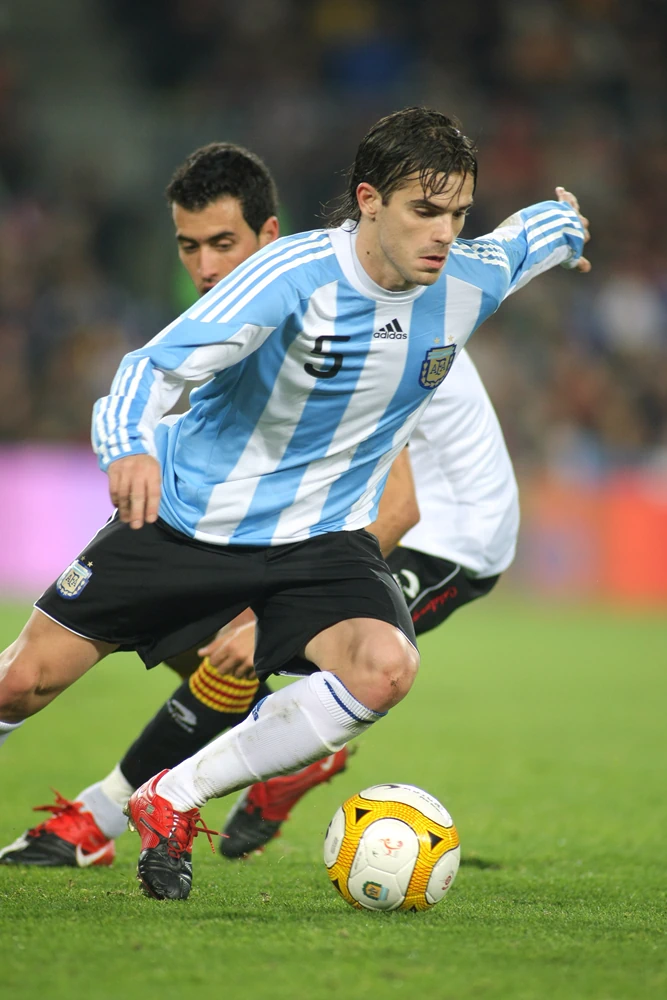Fernando Gago and the weight of expectations
Argentinian football can be quite demanding at times. People are extremely passionate in that country when it comes to football and there is an argument to be made that it is a lot more than just a sport-it is a way of life and a very important way for people to express themselves. Therefore, when a new player arrives to the scene, there are a lot of expectations placed upon him.
So, what went wrong for a talented defensive midfielder that was hailed as the natural successor to Fernando Redondo at Real Madrid? What caused him so much trouble that he didn't live up to his potential? We'll tell you this and a lot more in this article.
Boca Juniors and his time at Madrid
Born on April 10th of 1986 at Buenos Aires, Argentina, Fernando Gago was a defensive midfielder or deep-lying playmaker that made his debut for one of the biggest clubs in his home country, Boca Juniors, in 2004 at just 17 years of age. His classy way of playing, his passing abilities and his long hair drew comparisons to the legendary Argentinian midfielder of the 1990s, Fernando Redondo.Gago was part of Alfio Basile's strong Boca team of the mid-2000s, winning several trophies in the spam of a couple of years and establishing himself as a key cog in the squad's machinery at such a young age. He was highly regarded in Argentina and some of the best teams in the world were already interested in his signing.
It would be Real Madrid, a team that had shown interest in him for quite some time, who would be Gago's first destination in his European journey. As a fun fact, he was signed in the January transfer window of 2007, alongside the likes of striker Gonzalo Higuaín and left-back Marcelo-ironically enough, Gago was the highest rated talent amongst those three.
His time at Madrid was poised to be his rise to the top, but things went from great to bad in a very progressive manner. Gago started to perform really well for Madrid and helped the team win La Liga in his first two seasons there, building himself up as a very important player in the club.
However, injuries were starting to pile up in his career and as the years went by, Gago struggled with consistency. By the time the 2009/10 season arrived, with new manager Manuel Pellegrini and the comeback of their president of the early 2000s, Florentino Perez, there was a desire to revamp the squad and Gago wasn't so rated in that particular period.
Then, the following season, Jose Mourinho arrived to the Santiago Bernabeu and let go of Gago after a very underwhelming year where he wasn't taken into consideration by the Portuguese manager. This change would lead to a lot of difficult challenges in Gago's career.
Pilgrimage, stability and suffering
The next two years proved to be extremely complicated for Gago. He was no longer the highly rated South American that he was in the mid-2000s and his injury record made him a very difficult asset to sell from Real Madrid's point of view, leading to a very awkward situation in the summer of 2011.Regardless, Gago managed to move on loan to Italian club AS Roma to be a part of the new project of their recently appointed manager, Luis Enrique. However, injuries were still taking a huge toll on Gago and the Argentinian midfielder failed to make an impact during the vast majority of the season he spent in Serie A-it didn't help matters that the Enrique project fell apart mid-way.
He was sold to Valencia the next season and he also struggled there with the same issues, even going as far as joining Argentinian team Velez Sarsfield on loan for a tournament, but he rarely played and didn't make an impact. He eventually decided to go back to Boca Juniors, where he would stay for a total of six years.
Ironically enough, this period is probably the most consistent in Gago's career in terms of performances and stability with a team, but he still had to battle with a lot of serious injuries that took a huge toll in his career. He eventually joined Velez once again in the 2019/20 season, but shortly retired afterwards.
Aftermath
Fernando Gago is now working as a football manager, making his way in the sport through other mediums. It is difficult to not see a bit of misfortune in Gago's career: injuries took a monumental toll on his development and never enjoyed a degree of availability with his teams, therefore failing to be consistent as a player.There is also an argument to be made that he never managed to perform in Europe like he did in South America with Boca Juniors. There are a lot of examples of players that were quite promising in other continents, but never manage to make an impact in Europe because the leap in competition is just too big for them, which is quite likely what happened to Gago in the grand scheme of things.
The reality of football is that there are a lot of players that have to deal with a lot of expectations and some of them manage to deal with the circumstances and others don't. The case of Fernando is obviously the latter.
